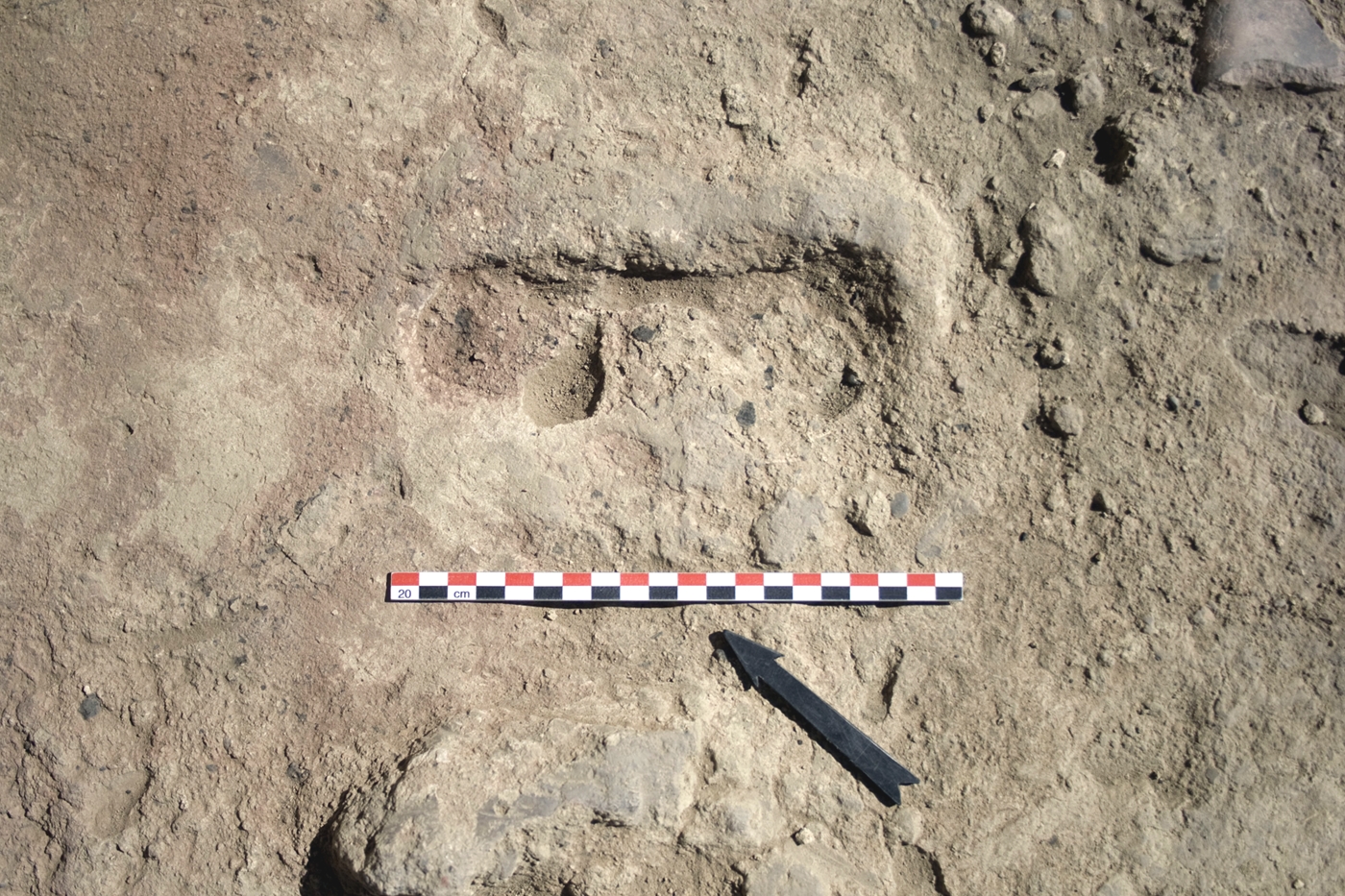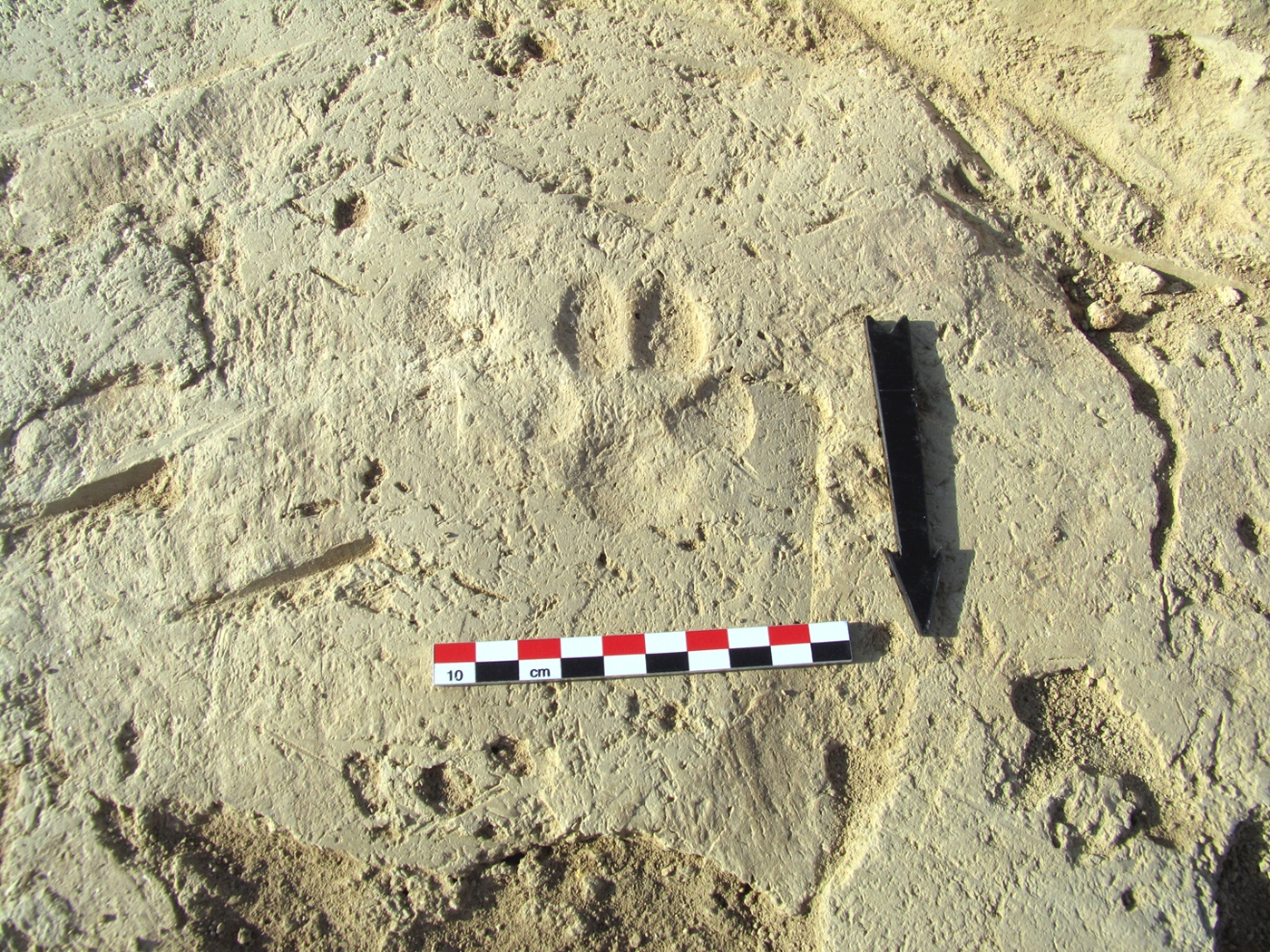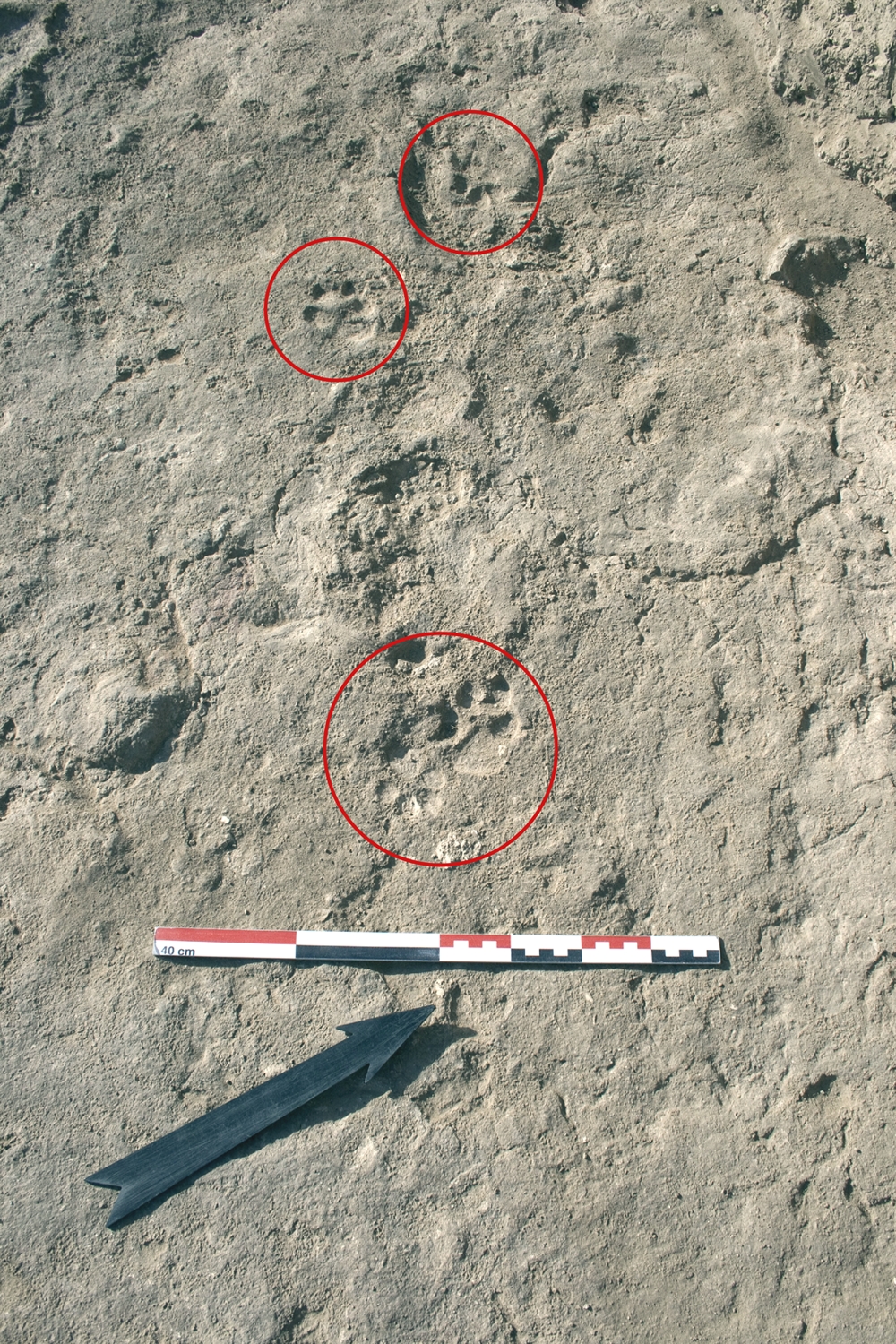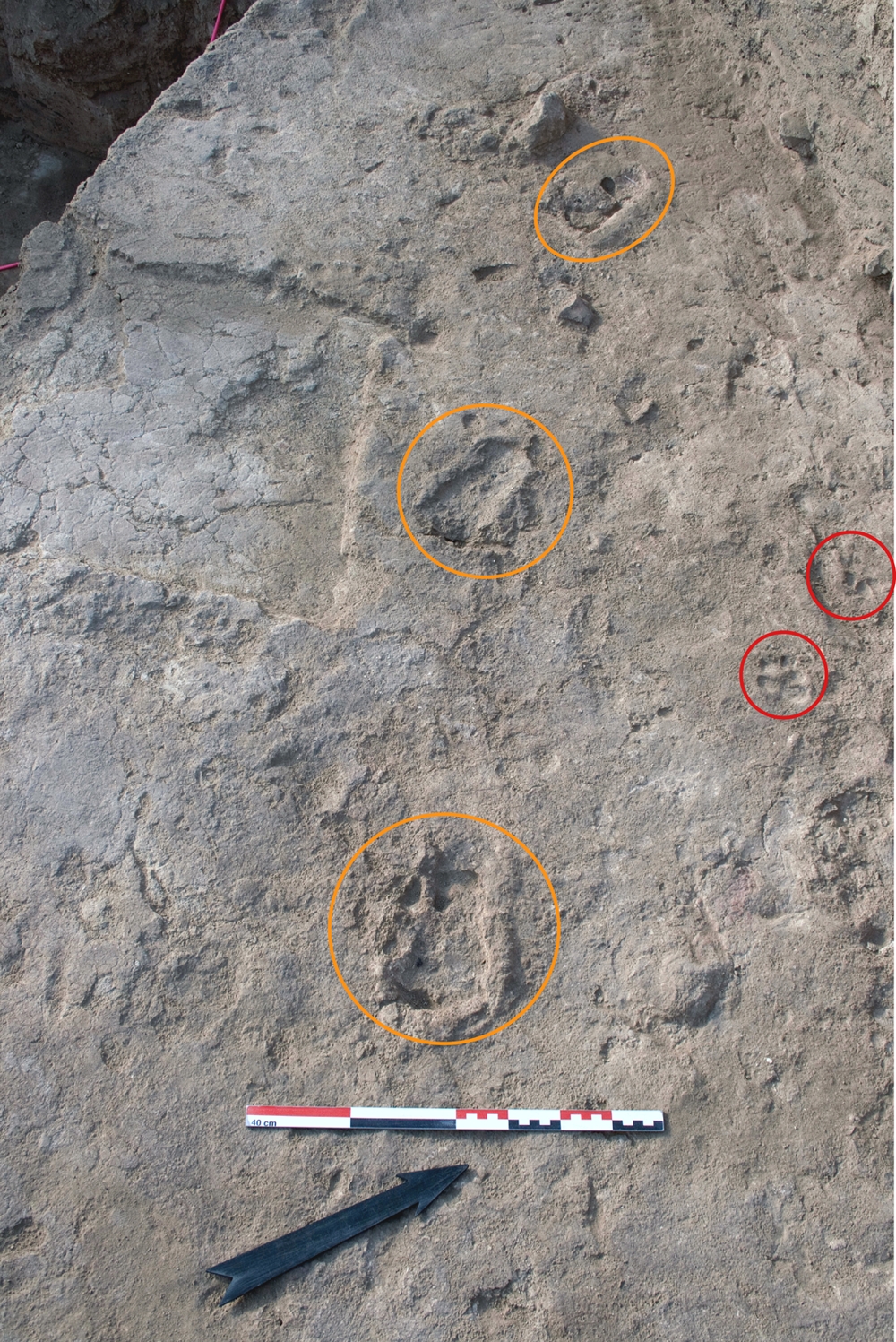Pawprints and Footprints in House 10

The floors and walls of houses at Monjukli Depe were covered with layers of white, red, and beige-colored plasters. It was apparently important to the inhabitants to redecorate their houses frequently.
This habit led to an interesting finding in House 10. In the course of a house renovation, a new clay plaster floor had been laid down, when two dogs and a child entered the house and left their paw- and footprints behind in the wet plaster. The impressions of the two dogs' paws run in the opposite direction to those of the child's feet. The latter apparently leaped rather than walked through the house, as suggested by the large intervals between the footprints.
Together with another pawprint of a dog in House 1, this finding shows that dogs were routinely permitted access to the village houses. This highlights an emotional closeness between people and certain animals that is otherwise seldom visible archaeologically.
For further reading, see Egbers in Pollock et al. (eds.) 2019.


